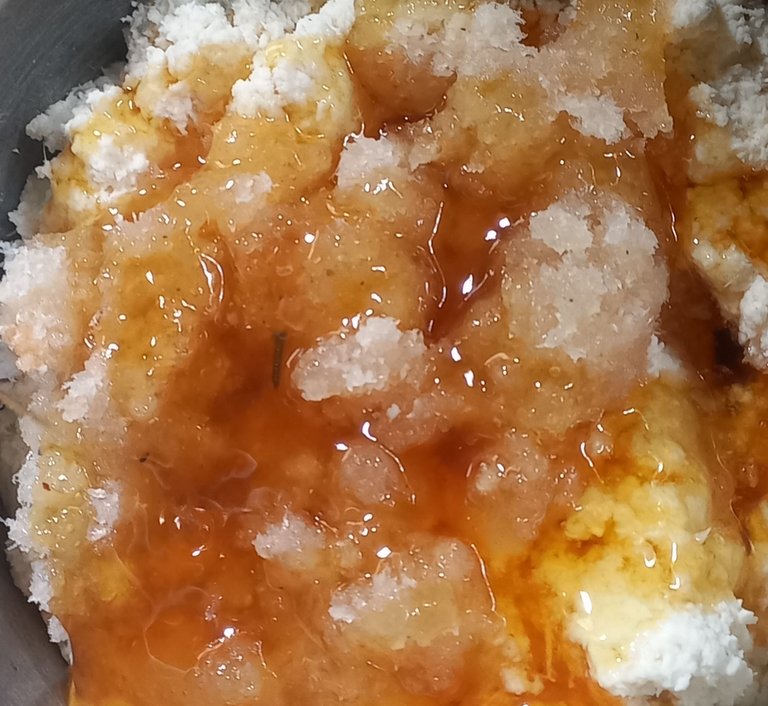
Se han olvidado muchas recetas de la tradición culinaria cubana, el postre que les presentaré quizás no aparece recogido en ningún libro de recetas, pero mi madre con 81 años de edad se empeña en mantener viva esa fortuna.
Les traigo un postre hecho por mi madre con nuestra ayuda, llamado matahambre. Es una receta que requiere mucho trabajo por lo que la rapidez de la vida moderna ha ido dejando a un lado. También quiero destacar las condiciones de humildsd en que se realiza, optando por la cocción más artesanal en fogón de leña o carbón improvisados, tal como lo hacían los primeros creadores de este postre. Todo lo aquí documentado es con respeto y el interés de preservar esta receta tradicional cubana.
Los ingredientes son completamente naturales, frutos de nuestra campiña cubana y frecuente en algunos paises de América.
Hola queridos amigos de @hivefood, desde mi entrada a #hive hice una busqueda de cominudades que me permitieran interactuar con recetas. Hoy quiero mostrarles un postre típicos de la pequeña ciudad de campo donde nací y que me traen muchos recuerdos de mi niñez. Soy Crítica de arte e investigadora social y este tema de rescatar tradiciones me fascina.
. 4 yucas rallada
. 4 cocos rallados
. 500 ml de miel de abeja
. Canela en polvo
. Hojas de platano
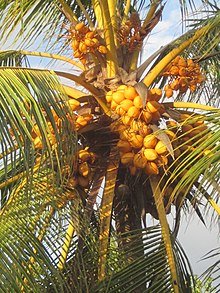 | 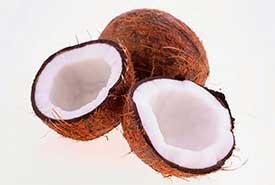 | 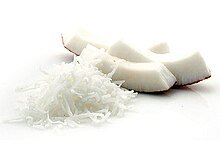 |
|---|
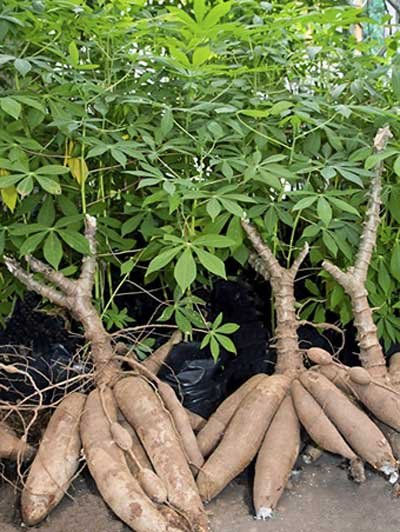 | 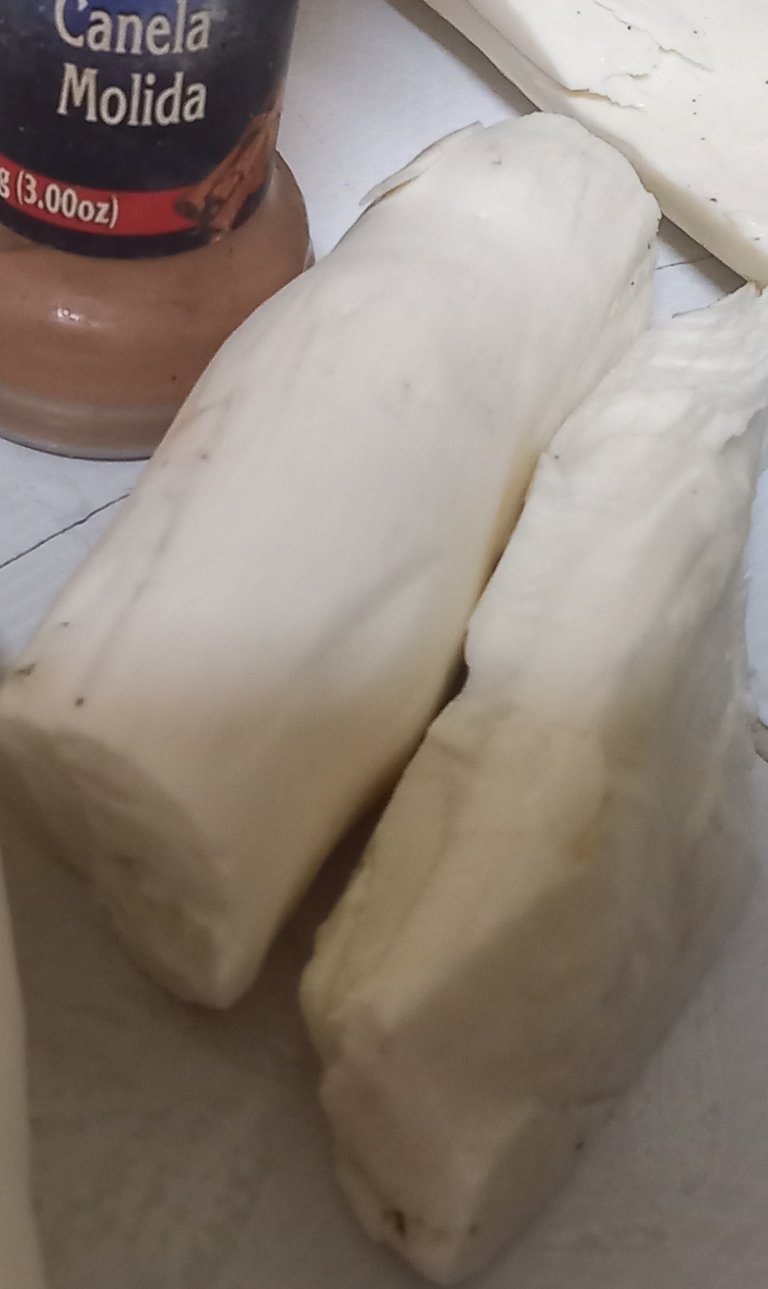 | 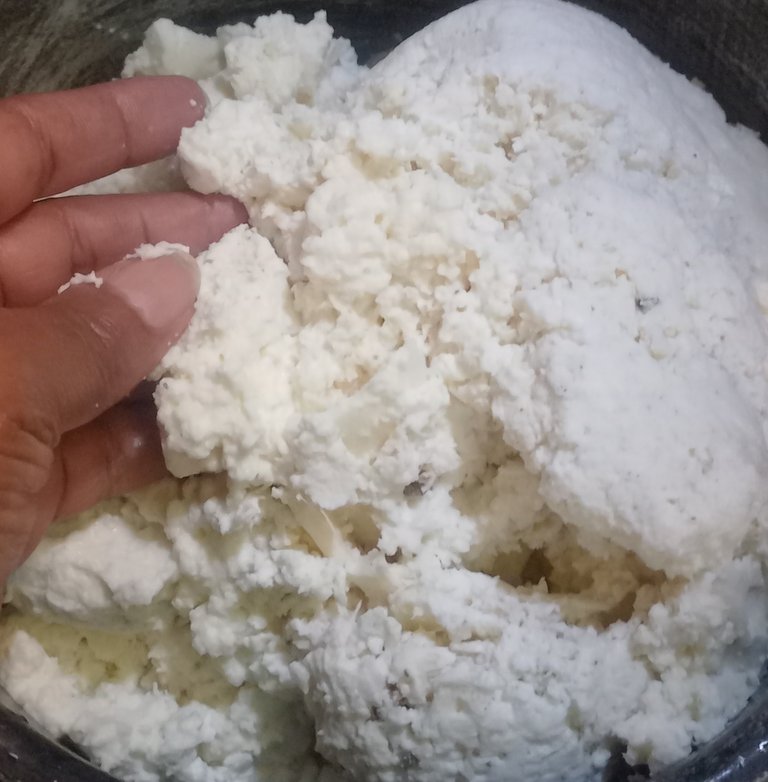 |
|---|
1.Primeramente mi madre puso los Cocos rallados con miel al fuego hasta cocinarlos por 30 minutos, una vez que se reduce el almíbar se retira del fuego y se deja refrescar. Esta labor la hizo un día antes pues requiere mucho tiempo preparar todos los componentes.
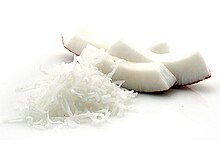
2.Las yucas se pelan y procesan en el momento de la preparación pues es un tubérculo rico en almidón y se descompone facilmente. Mi madre pone mucho cuidado en retirar todos los elementos duros que puedan causar molestias en la masticación.
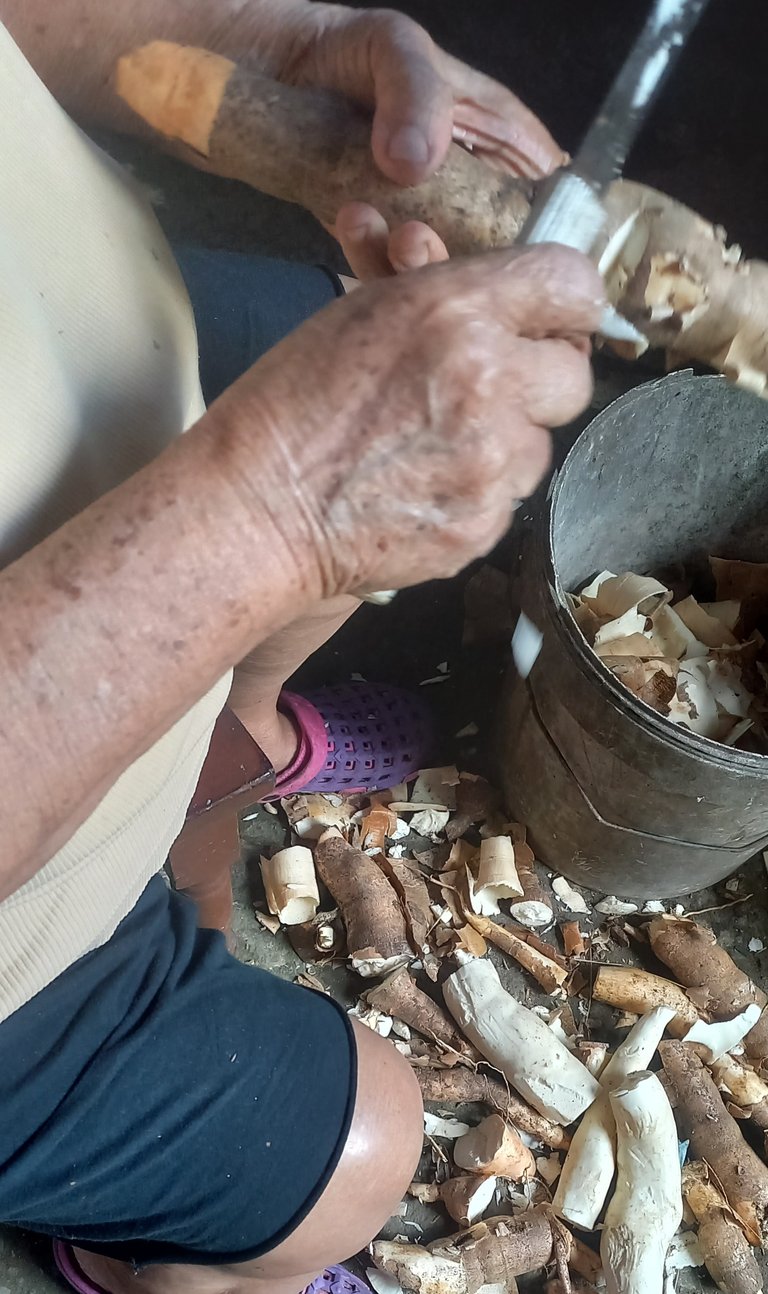
3.Luego de lavadas las yucas mi hermano se ocupó de molerlas en uno de los equipos diseñados y construidos por él, lo que facilita a mi madre la gran labor de rallarlas.
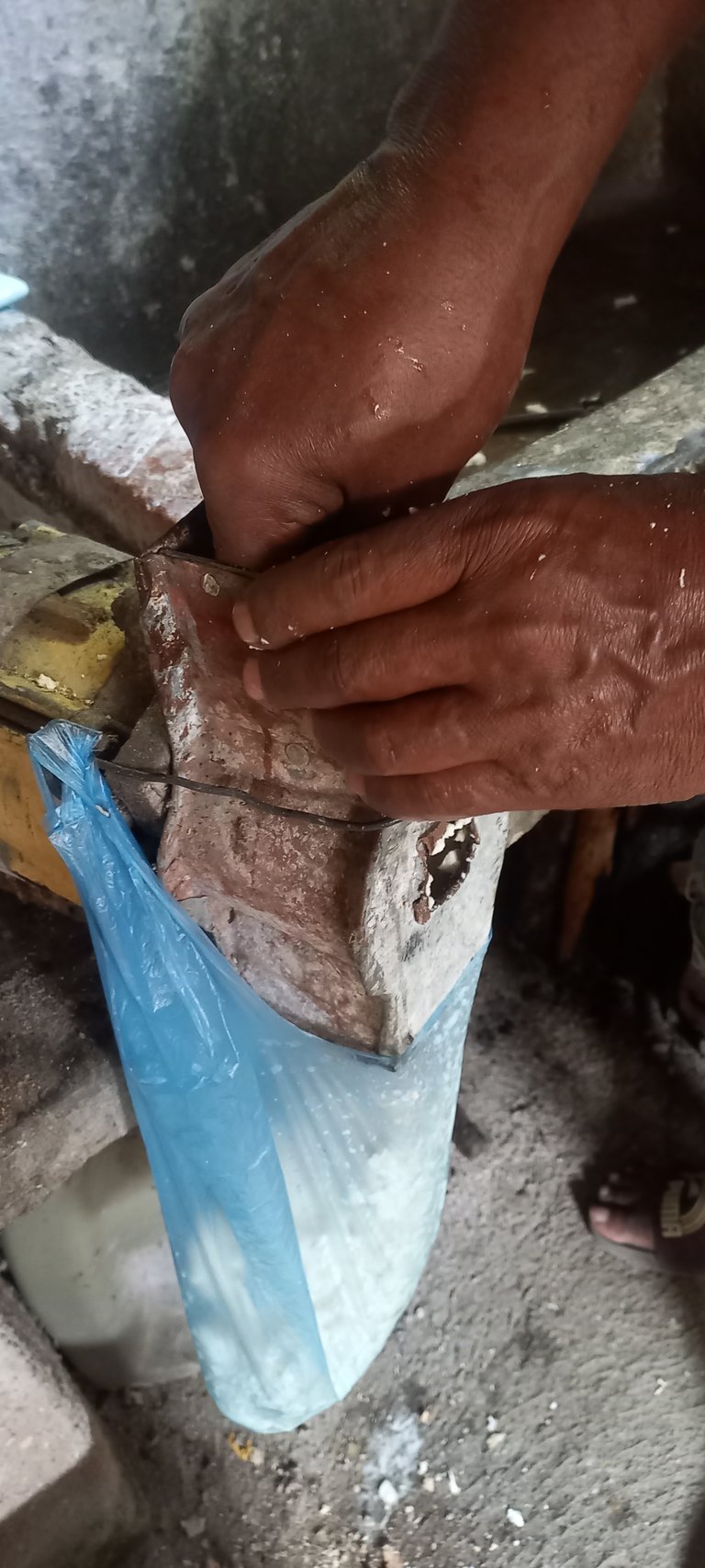
4.La masa molida es colocada encima de un tamiz por unos minutos, ejerciendo presión para que expulse el exceso de líquido.
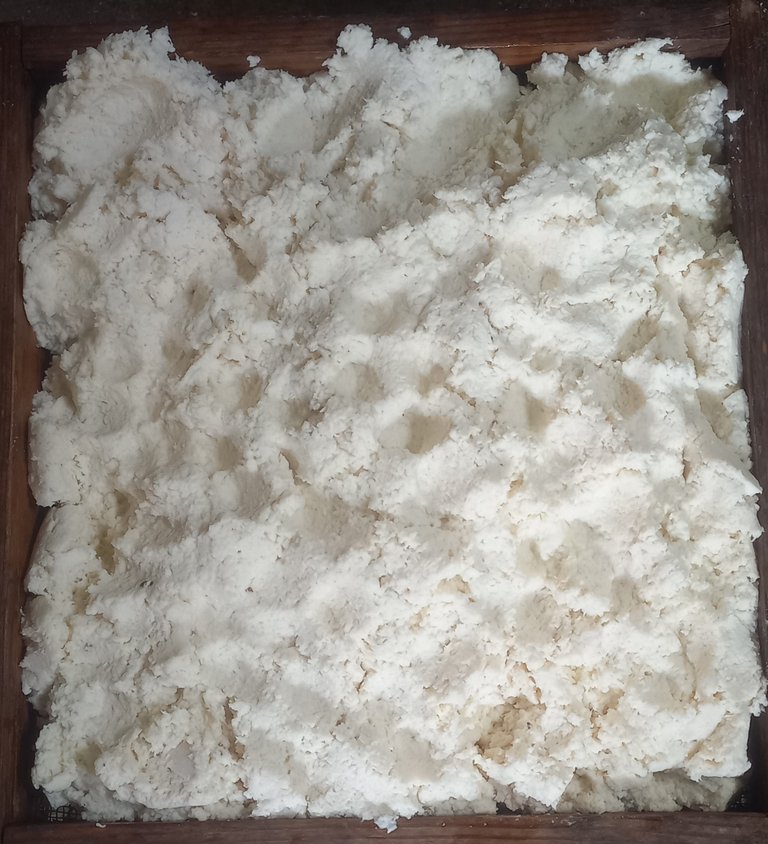
5.Mientras se procesa la mezcla arreglamos el fuego en un área que esté acorde con la cantidad que pondrás, aqui está a la manera tradicional con madera y carbón y una plancha metálica bien higienizada.
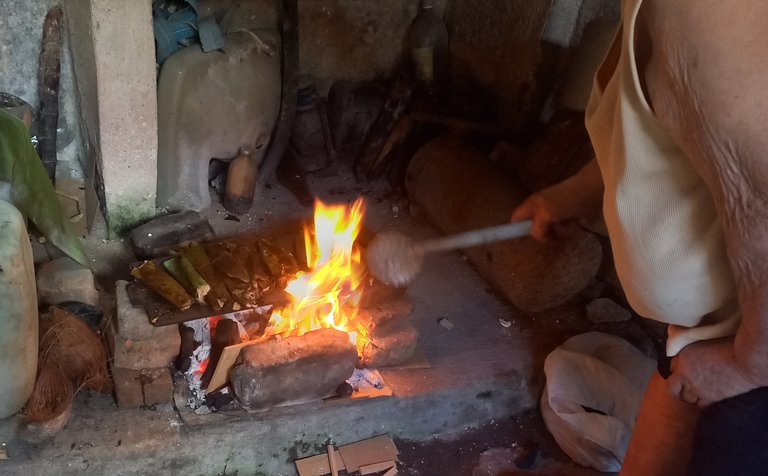
6.Lista la masa de yuca y el dulce de coco (cocada), se pasa a una mesa cómoda para unir los ingredientes. Se vierte la masa de yuca en un recipiente amplio, se pone la cocada y se revuelve hasta integrar en una masa homogénea.
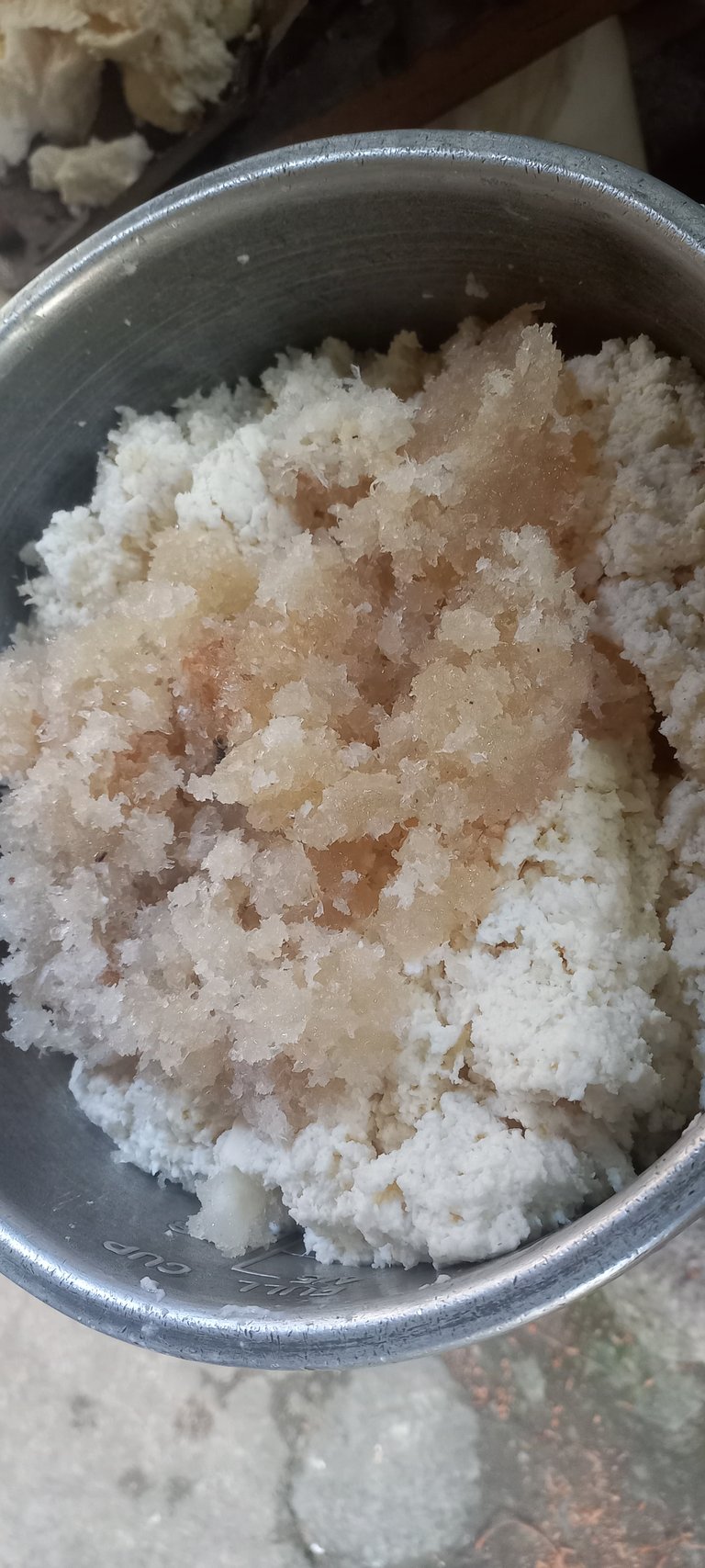
7.En un recipiente se mezcla la miel con la canela para lograr una mejor integración. Y se vierte sobre la mezcla de yuca y cocada. Se revuelve sufiente hasta integrarlo. No debes exceder el punto de miel pues se derrama y el fuego puede malograr el resultado.
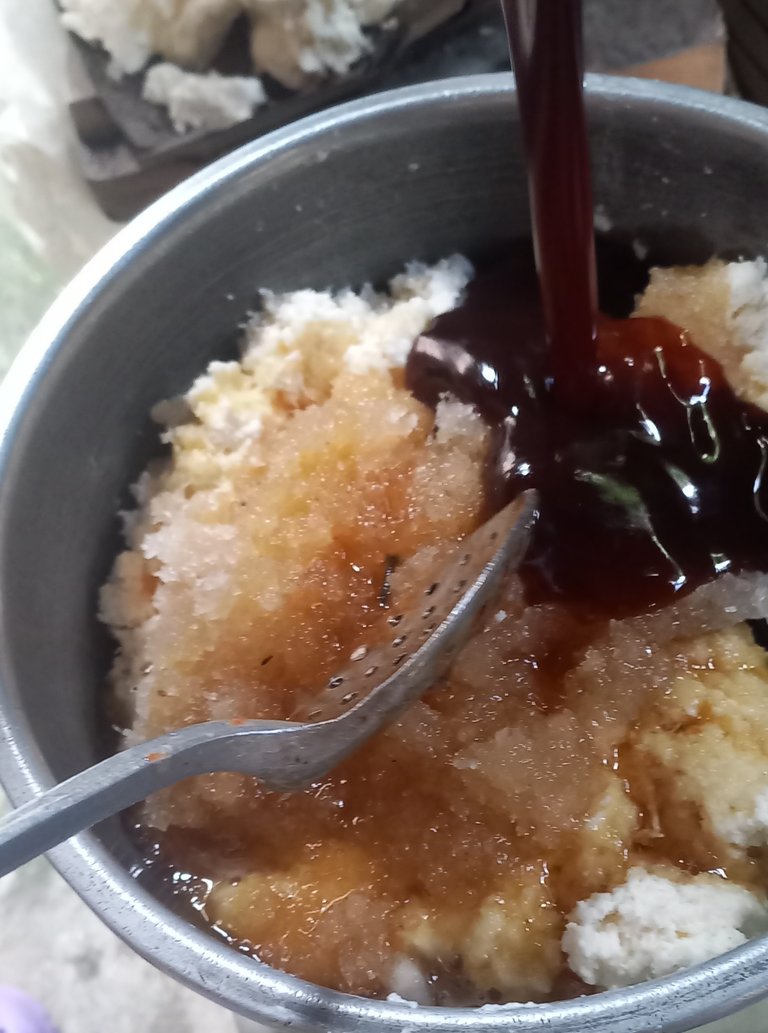
8.Las hojas de plátano debidamente lavadas y secas, se pican en piezas de 25x25 cm aproximadamente.
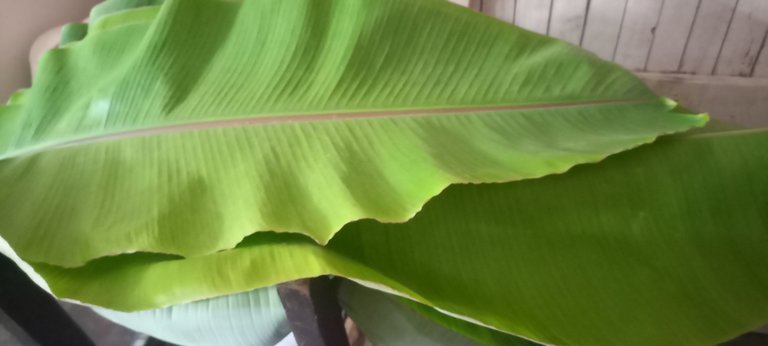
9.Viertes en cada pieza tres cucharadas generosas de la mezcla y envuelves cuidadosamente, puedes atar con hilos para mayor seguridad. La pericia de mi madre le otorga confianza.
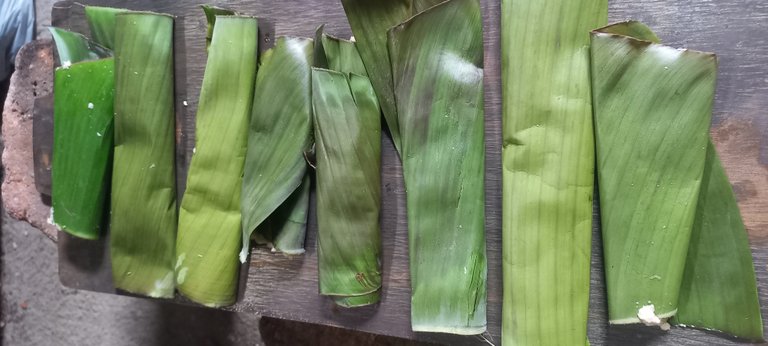
10.Controlamos el fuego y volteamos cuidadosamente cada royo de manera que se vaya dorando. Llevará alrededor de 20 minutos para su cocción.
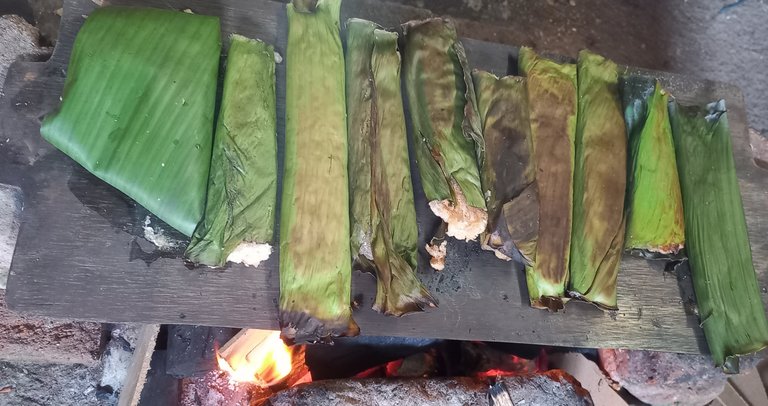
11.Mi madre insiste en que nos aseguremos de darle el punto exacto pues los prefiere cocidos con la capa semitostada. A este punto el olor es delicioso.
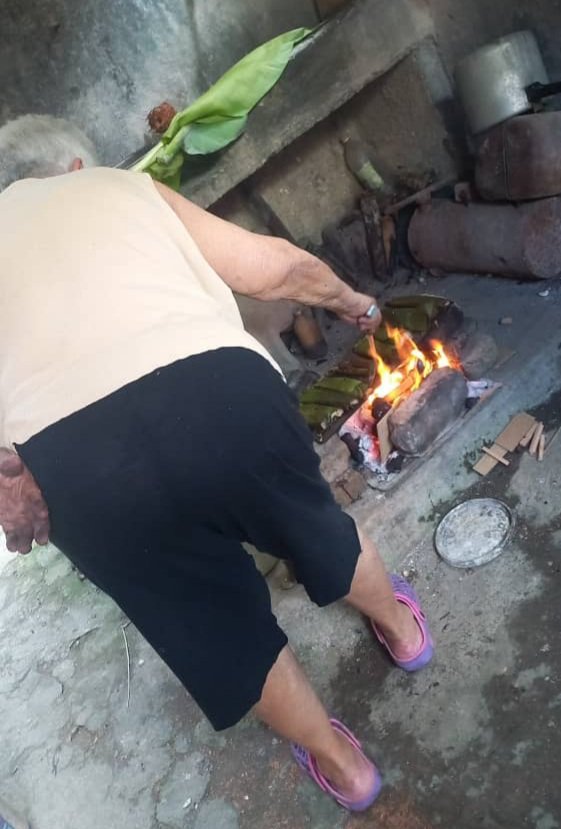
12.Y pasada media hora ya empiezan a quedar los primeros, dejarlos refescar para retirar la hoja y ponerlos en un recipiente.
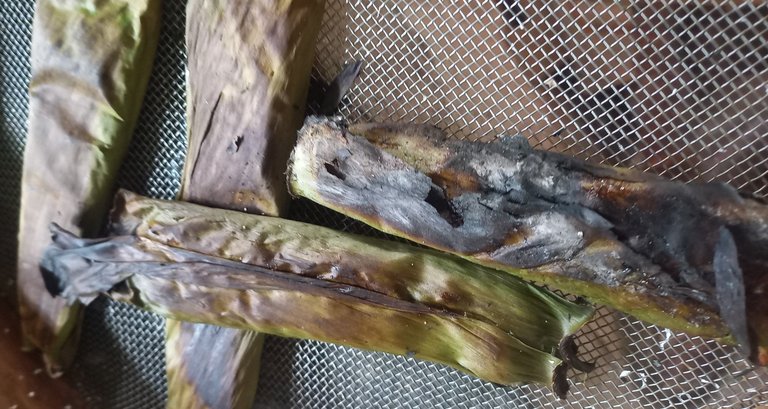
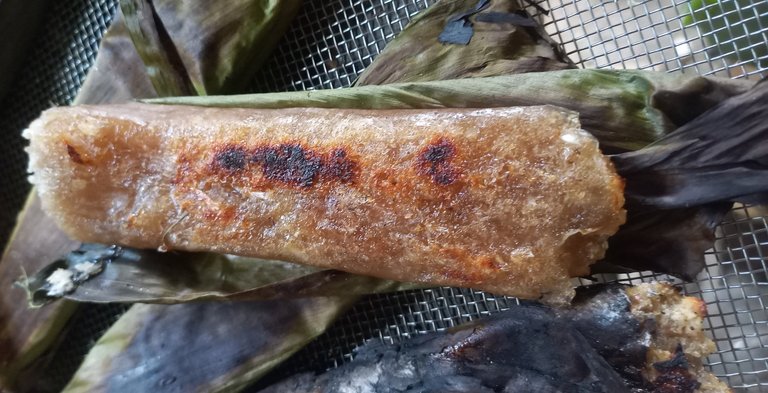
El matahambre es una receta, tal como su nombre lo indica, para matar el hambre, fue confeccionada por los antepasados y realizada por los habitantes del campo para ser preservado por largo tiempo, pues no requiere refrigeración. Recuerdo a mi padre cuando llevaba matahambre al campo para sus merienda.
Debe guardarse sin miel añadida, para más durabilidad. Si prefieres al servir puedes agregar miel o comerlo con leche, té o café. Una deliciosa receta tradicional cubana que aún disfrutamos.
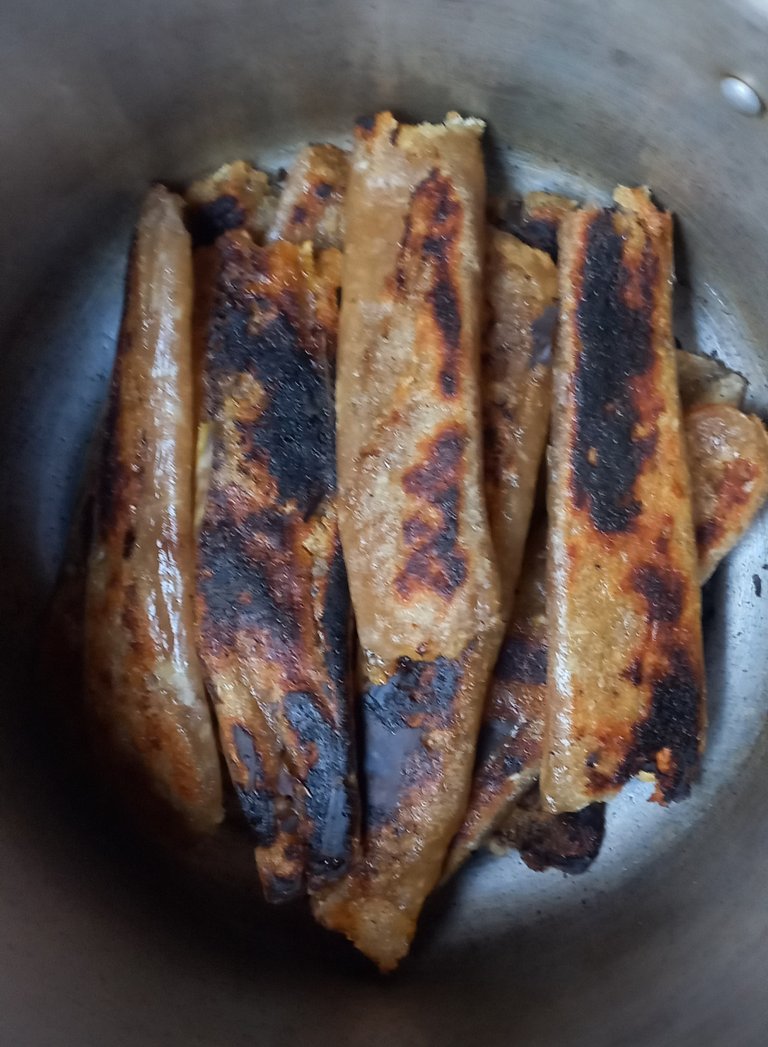
Esta publicación ha sido escrita y documentada por mi, no contiene IA. Las fotos utilizadas son debidamente referenciadas y de mi propiedad.
Mathambre a traditional Cuban vegan dessert

Many recipes from the Cuban culinary tradition have been forgotten, the dessert that I will present to you may not appear in any recipe book, but my 81-year-old mother is determined to keep that fortune alive.
I bring you a dessert made by my mother with our help, it's called matahambre. It is a recipe that requires a lot of work, which the speed of modern life has been putting aside. I also want to highlight the humble conditions in which it is carried out, opting for more artisanal cooking in improvised wood or charcoal stoves. just like the first creators of this dessert did. Everything documented here is done with respect and the interest of preserving this traditional Cuban recipe.
The ingredients are completely natural, fruits of our Cuban countryside and common in some countries in America.Hello dear friends of @hivefood, since I entered #hive I did a search for communities that would allow me to interact with recipes. Today I want to show you a typical dessert from the small country town where I was born and that brings back many memories of my childhood. am an art critic and social researcher and this topic of rescuing traditions fascinates me.
. 4 yuccas grateds
. 4 coconuts grateds
. 500 ml of honey
. Cinnamon powder
. Banana leaves
 |  |  |
|---|
 |  |  |
|---|
1.First my mother put the Coconus grateds with honey over the heat until cooked for 30 minutes. Once the syrup is reduced, remove it from the heat and let it cool. He did this work a day before because it requires a lot of time to prepare all the components.
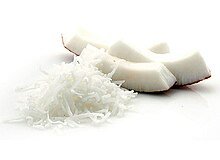
2.Cassavas are peeled and processed at the time of preparation because it is a tuber rich in starch and decomposes easily. My mother takes great care to remove all hard elements that may cause discomfort when chewing.

3.After washing the yuccas, my brother took care of grinding them in one of the equipment designed and built by him, which makes it easier for my mother to do the great job of grating them.

4.The ground mass is placed on top of a sieve for a few minutes, applying pressure to expel the excess liquid.

5.While the mixture is processing, we arrange the fire in an area that is consistent with the amount you will put in, here it is in the traditional way with wood and charcoal and a well-sanitized metal plate.

6.Ready the cassava dough and the coconut candy (cocada), move it to a comfortable place to join the ingredients. Pour the cassava mass into a large container, add the cocada and stir until integrated into a homogeneous mass.

7.In a container, mix the honey with the cinnamon to achieve better integration. And it is poured over the yucca and cocada mixture. Stir enough until integrated. You should not exceed the point of honey as it spills and the fire can spoil the result.

8.The banana leaves, duly washed and dried, are chopped into pieces of approximately 25x25 cm.

9.Pour three generous tablespoons of the mixture into each piece and wrap carefully, you can tie with thread for greater security. My mother's expertise gives her confidence.

10.We control the heat and carefully turn each royo so that it browns. It will take about 20 minutes to cook.

11.My mother insists that we make sure we give it the exact point because she prefers them cooked with the semi-toasted layer. At this point the smell is delicious.

12.And after half an hour the first ones begin to remain, let them cool before removing the leaf and putting them in a container.


The matahambre is a recipe, as its name indicates, to kill hunger, it was made by the ancestors and made by the rural inhabitants, as it does not require refrigeration. made by rural inhabitants to be preserved for a long time, since it does not require refrigeration. I remember my father taking matahambre to the countryside for his snacks.
It should be stored without added honey, for longer durability. If you prefer when serving you can add honey or eat it with milk, tea or coffee. A delicious cuban traditional recipe that we still enjoy.

This post is written and documented by me,AI free. The photos used are duly referenced andmy property.
Procura guardarme uno. Jjj
Hola. Así será.
Voy a convencer a mi mamá para probar y preparar algunos.
Hablale de la receta a lo mejor supo de ella.
sí, le dije, aquí no sabíamos lo que era el matahambre.
Pues manos a la obra, primero a reunir ingredientes y luego debes ayudarle 😊 y luego si te gusta lo repites.
Tengo que comer eso algún día!
Te aviso cuando haya y lo envío por ómnibus 😊
Congratulations @iriswrite! You have completed the following achievement on the Hive blockchain And have been rewarded with New badge(s)
Your next target is to reach 300 comments.
You can view your badges on your board and compare yourself to others in the Ranking
If you no longer want to receive notifications, reply to this comment with the word
STOP¡Felicitaciones!
Estás participando para optar a la mención especial que se efectuará el domingo 26 de enero del 2025 a las 8:00 pm (hora de Venezuela), gracias a la cual el autor del artículo seleccionado recibirá la cantidad de 1 HIVE transferida a su cuenta.
¡También has recibido 1 ENTROKEN! El token del PROYECTO ENTROPÍA impulsado por la plataforma Steem-Engine.
1. Invierte en el PROYECTO ENTROPÍA y recibe ganancias semanalmente. Entra aquí para más información.
2. Contáctanos en Discord: https://discord.gg/hkCjFeb
3. Suscríbete a nuestra COMUNIDADEntra aquí para más información sobre nuestro trail. y apoya al trail de @Entropia y así podrás ganar recompensas de curación de forma automática.
4. Visita nuestro canal de Youtube.
Atentamente
El equipo de curación del PROYECTO ENTROPÍA